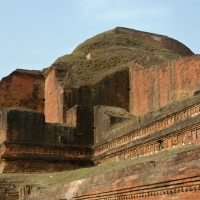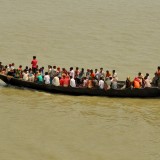History
The word Bangladesh means “the land of Bengal“. Since the 2nd century BC, the area was part of the Maurya Empira, later of India. In the 12th century, Islam started to spread across the region. Britain gained control of Bengal in 1757. The colonial rule favoured the Hindus, increasing religious tension in the area. In 1905, Bengal was split into two parts, the Hindu western part and the Muslim eastern part. The partition met with resistance and Bengal was reunited in 1915.
After the British Empire left the region in 1947, Bengal was once again partitioned along religious lines, with the Hindu western part going to India and the Muslim eastern part joining the Islamic Republic of Pakistan as a province called East Pakistan, separated from the West Wing by 1,500 km of Indian territory. The 1970 general election was won by the Bangladesh People's League, promoting the independence of Bengal. However, instead of acknowledging the independence, the Pakistani government sent its army to suppress Bengali rebels. A civil war broke out, with East Bengal being supported by India and the USSR, resulting in the declaration of Bangladesh’s independence in March 1971. The Bangladesh People’s League leader Sheikh Mujibur Rahman became the country’s first president. The following period is characterized by a series of violent coups that could be considered a civil war. The state of emergency was called off in 1991. Today, the region is in relative peace. West Bengal was largely spared from the violence and is still part of India.


